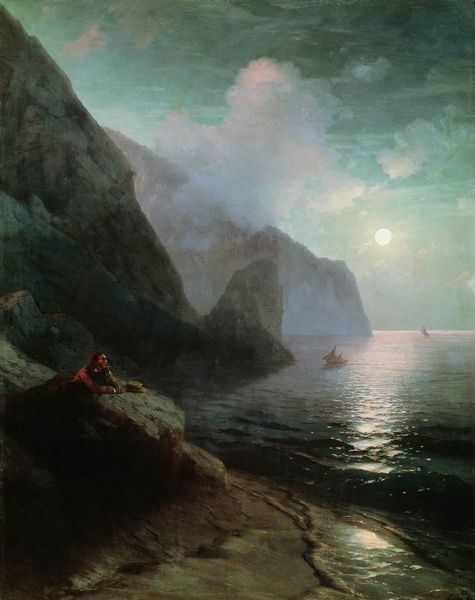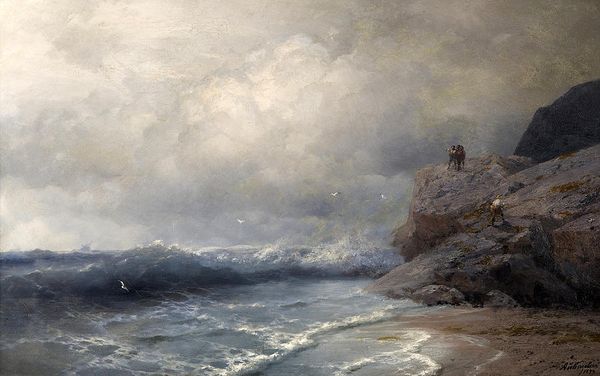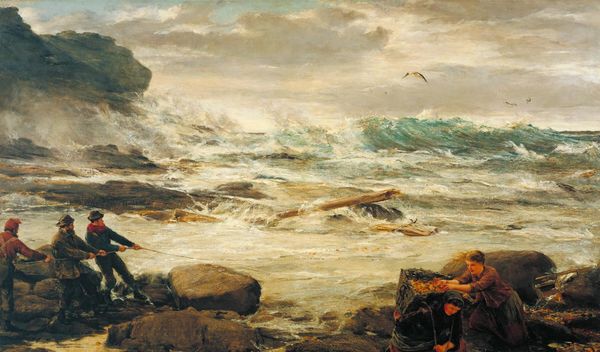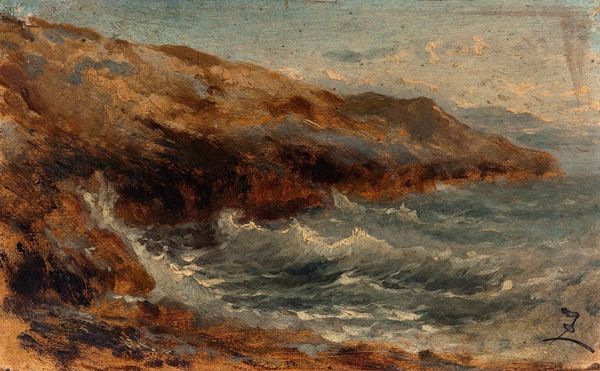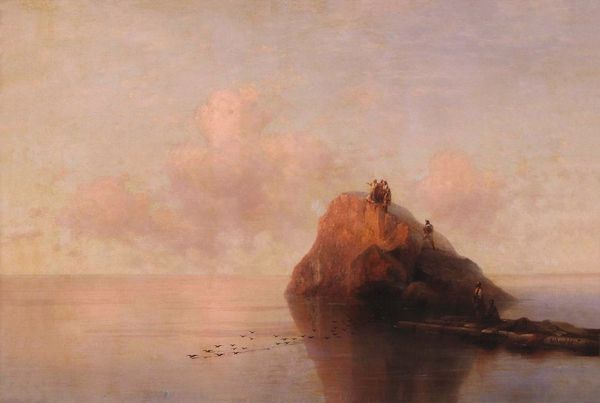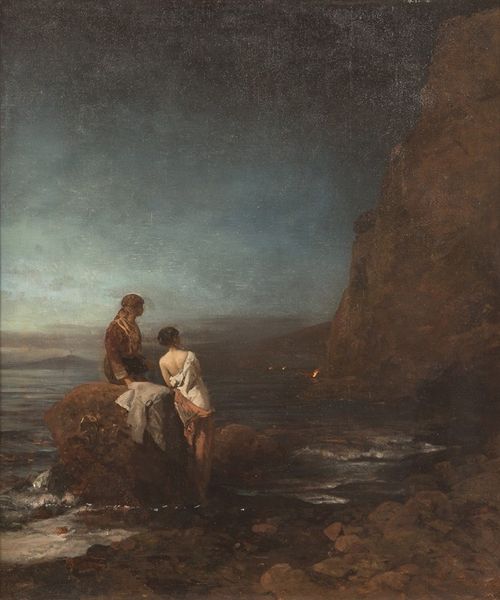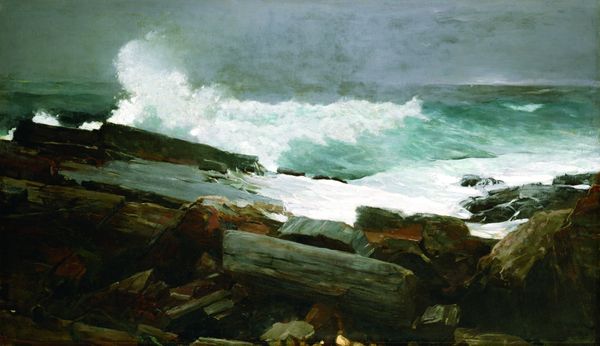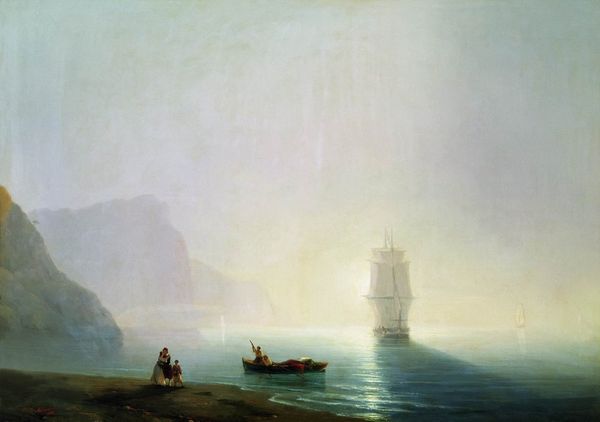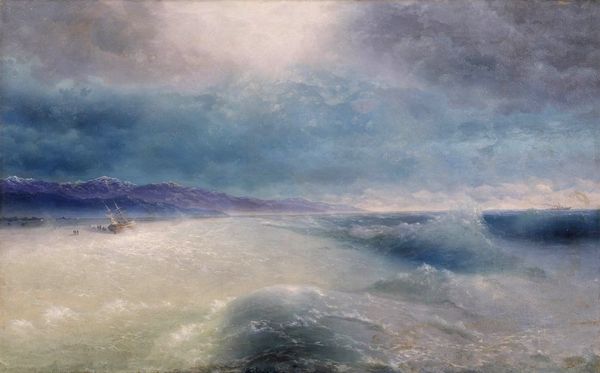
Pushkin on the coast Black Sea 1887
0:00
0:00
ivankonstantinovichaivazovsky
Mykolayiv Museum of Fine Arts (Vereshchagin Museum), Mykolayiv, Ukraine
Dimensions: 212 x 314 cm
Copyright: Public domain
Editor: Here we have Aivazovsky's "Pushkin on the Coast of the Black Sea," painted in 1887. It’s oil on canvas and presents a solitary figure gazing out at the sea. What do you see in this piece beyond the obvious representation? Curator: Well, first, look at how the materials are used. The thick impasto of the waves contrasts sharply with the thinner application in the sky. Consider what this difference in technique tells us. Was Aivazovsky simply prioritizing a dramatic effect, or was he making a statement about the hierarchy of artistic labor at the time? Editor: Hierarchy of artistic labor? Curator: Yes. Landscape painting, while popular, was often seen as less intellectual than, say, history painting or portraiture. Was Aivazovsky, through his masterful handling of paint, subtly elevating the genre, staking a claim for its artistic merit? Consider too the social context. Who commissioned this painting, and what was their intention? Were they interested in celebrating Pushkin, or perhaps in promoting a certain view of Russia’s relationship to the Black Sea and its resources? Editor: So, the materials and the making are just as important as the subject matter itself. It changes how you view it! Curator: Exactly. The artistic choices are never neutral; they're always embedded within a web of social, economic, and political relations. What does it mean that this painting hangs in Mykolaiv, Ukraine, today, given Russia’s current occupation of parts of the country? Editor: It sounds like it has become another layer on this complex cultural object. Curator: Precisely! This reframing really highlights how the work still creates dialogue now.
Comments
No comments
Be the first to comment and join the conversation on the ultimate creative platform.

